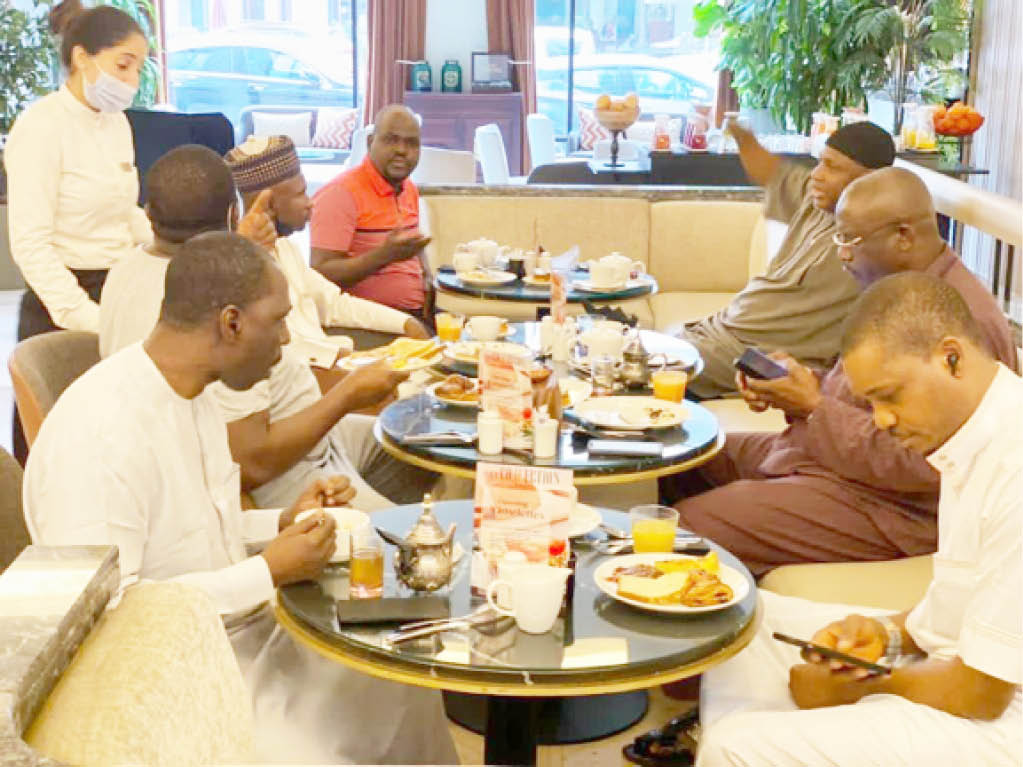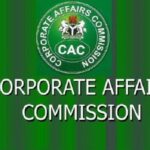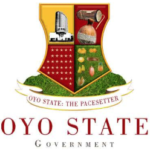To a curious journalist, a visit to Morocco opens a maze of bewilderment as one juggles which of the numerous striking sights and sounds of Morocco to delight readers with.
Unlike in other cities where street lights glamour the aerial views, it is lush green plains and ranches that adorns the outskirts of Casablanca.
Disembarking at Mohammed V International Airport after the 3,185/1,980 miles trip from Lagos, the greenish view changed to a beautiful flora of yellow flowers. To me, this represented the seriousness of Morocco in agriculture.
It was 6:28 am. I, along with the delegation of the Nigeria/Morocco Business Council (Nigeria Chapter) deplaned and we’re picked by a hired tourist bus.
Driving on the airport road, the sight of an extensive wheat paddy and ranch divides the dual carriageway – left and right – that gives pleasure to visitors who crave connection with nature.
“It’s a beautiful agricultural pattern that gives Moroccans easy and direct access to fresh milk, meat and wheat. It’s one area that Nigerian investors need to explore,” said the National Secretary of the council, Ahmed Shu’aibu-Gara Gombe.
To buttress his point, Gombe led us to a restaurant in the city centre of Casablanca. A buffet of fresh delicacy for everyone. For me, it was a chance to eat the rich and tasty food of Morocco.
On the plate, was lamb minced with garlic, chicken breast, and fried rice, cooked vegetable salad and a loaf of bread sprinkled with cumin to scoop up with. A cup of Moroccan mint tea – a drink of choice – also known as ‘Moroccan whisky’ was served to help soothe the throat.
At the end of the meal, it’s a discovery of incredible food that some of us had never tested. But, for all the entrepreneurs, thanks to Shu’aibu-Gara that introduced them to the food business part of the trip.
At every little distance in the city centre, eateries and coffee joints are always on sight, with a bevvy of young people grabbing quick bites of their favourite food. In Morocco, I was made to accept that tea and bread are complimentary appetizers for guests everywhere one goes.
Moroccans on the streets of Casablanca are very happy, friendly and accommodating, you hardly see gloom on their faces in public places.
Excitement of Beach walk in Casablanca
Walking by the seaside is another unique pleasure in Casablanca: Children, the old and a bevvy of young people get together in the evening to watch and listen to the sound of swirling waves and smell the sea air to ease their daily stress.
The relaxed ambience of nature encourages children to have fun and play games while the young and old – convivial or romantic – seated at the attractive promenades along the seafront, chatting and listening to the sound of the nearby tide.
By 7:20 pm, life at the breathtaking sea view begins to slim; the Moroccan jazz that eases the chilly sea breeze slowly disappears. The chilly weather became very uneasy, especially for those who visited unprepared.
A chef at one of the seafront eateries that we placed a last minute order, advised us to be fast and leave the area before 8 pm. He said parks, the beach and other public places closed at exactly 8 pm to ensure empty streets for the 9 pm curfew to be fully enforced.
“Before the COVID-19 pandemic, people party and enjoy this place up to the middle of the night,” it was a challenge understanding Rhadi since he could only speak Arabic.
An evening glimpse of Hassan II mosque
At sunset, a glimpse of the opulent Hassan II mosque is another worthy experience I found in Casablanca. It’s a landmark that attracts visitors from every part of the city.
Upward from the Atlantic coast, the sky swarms with a frenzy of egrets adding a spectacle to the mosque minarets. It`s the second tallest in the world at 210 metres and (689ft).
Part of the mosque, according to Ahmed, extends into the Atlantic Ocean, which made it stand out from every other mosque but, the second-largest in Africa and 7th largest in the world.
Access inside the mosque was restricted due to COVID-19 pandemic; however, the old man we met said, “the mosque is large enough to accommodate 105,000 worshippers – 25,000 inside, the rest on the outside courtyards”.
The pandemic had denied us the opportunity to see the handwork of more than 6,000 assembled master craftspeople that worked on the mosque, which showcased the finest Moroccan artisanship.
According to those who visited, the mosque is hand-carved stone and wood, intricate marble flooring and inlay, gilded cedar ceilings and exquisite zellige (geometric mosaic tile work).
On our way to the hotel, approximately 35 minutes drive, the awkward movement of the electric train that crisscrossed the smooth township roads and tall buildings were admirable to every Nigerian businessman on the trip.
“Why can’t Nigeria construct something like this,” Prince Sule-Iko Sadeeq Sani Sami interjected, recalling how it was almost impossible to fix two meetings at different locations in Lagos.
“A lot of things would have been made easier with this train in Lagos. The funny thing is that we have all the resources to construct these train services in Nigeria, why not?” he added.

State-of-the-art trains of Casablanca
This is another high point of my visit to Casablanca. On many occasions during the morning and evening’s busy hours, motorists give way to moving trains on the beautiful streets of the city to meet many passengers’ demands.
At one of the signalised junctions in the city centre, I noticed passengers comfortably seated and chatting in the train, sure of reaching their destinations on time. For us driving in a hired tourist bus, it was a stream of heavy traffic when the moving train was unstoppable.
Ahmad, the driver of our bus told me that, the train is quick and safer to use, “Inside the train, passengers benefit from air-conditioning, free Wi-Fi and USB charging points and real-time information screens.
“Once you start using this train, you’ll be addicted. The comfort is something else,” he said.
In the morning, looking outside from the 4th floor of my hotel room – Raddisson Blu – I noticed how passengers board and alight from the electric train at one of its stations down my balcony. It makes no sound to disturb or wake guests in the nearby hotels.
Morocco’s King Mohammed VI and French President Emmanuel Macron, inaugurated the speed train in November 2018.
The king named the train “Al Boraq” in reference to the mythical creature that transported Prophet Muhammad (pbuh) during the Night Journey from Makkah to Jerusalem and then to heaven.
Casablanca is the largest city in Morocco and one of the most important in Africa, both economically and demographically. It’s also the economic and business centre of the country.
The city, located in the central-western part of the country also borders the Atlantic Ocean.
A chance to visit Rabat
On the day of our visit to Rabat, where Nigeria and Moroccan entrepreneurs met and signed the agreement for the establishment of a Business Council, the journey was a remarkable experience.
After an approximately 2 hours trip, which we spent admiring the beautiful infrastructures of Morocco, we arrived at the city of Rabat, located in northern Morocco around 10:15 pm.
The city, more beautiful than I ever thought, had tall buildings on both sides of the road. For the days I spent in Rabat, everywhere looked the same as the way to my hotel.
At 11 pm, we were at the Nigerian High Commission in Rabat, where the businessmen had wonderful discussions with the Charge de Affaires, Haruna Musa.
He assured the Nigerian delegation of entrepreneurs that he supports them at every step of their effort to take advantage of all the bilateral agreements signed between Nigeria and Morocco.
He also encouraged them to persevere in the pursuit of their business interests, saying there is a lot in private sector investment though, most of the agreements signed were one-sided and Nigeria hardly benefitted from them.
The following day, the agreement was signed that saw the establishment of the Business Council, on March 27, 2021, in Rabat.
The council, a private sector-driven initiative, is to explore and break new grounds for business opportunities in the two countries, and to improve the existing ones for better results.
Chairmen of the council, Yusuf Hamisu Abubakar (Nigeria) and Dr. Najib Kettani (Morocco), with inputs from members, mapped out strategies for a sustainable economic and trade relationship.
Hamisu Kabir Matazu who was in Morocco

 Join Daily Trust WhatsApp Community For Quick Access To News and Happenings Around You.
Join Daily Trust WhatsApp Community For Quick Access To News and Happenings Around You.


